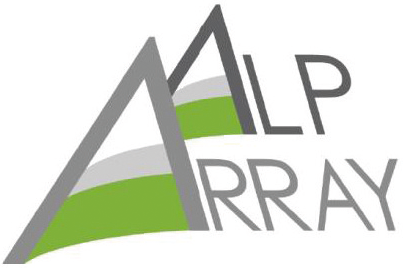Themes
The main goal of this SPP is to understand how re-organizations of Earth’s mantle during the collision of tectonic plates are related to processes that ultimately affect the Earth’s surface in mountain belts. This will be enabled by generating the first truly 4D image of a mountain belt. Imaging mountains in four dimensions departs from traditional 2D and current 3D approaches which rely on classical seismic profiling and geological section-balancing to reconstruct crustal evolution, in most cases without regard for the mantle. 4D imaging combines leading-edge seismic imaging technology (e.g., full waveform inversion applied to dense, wide-aperture station arrays) with state-of-the-art geodynamic modeling and geological constraints on motion history (kinematic and geodetic analyses) to trace changes of this complex structure back in time. The resulting 4D image is a model that allows us to explore in detail the physical processes that have given rise to mountains and that are still actively shaping them today. This includes the study of transient processes acting on the scale of an entire mountain range, which is vital for better assessments of natural hazard and resources in orogens worldwide. 4D imaging will revolutionize solid-earth science in much the same way that CAT scans improved diagnostic medicine.
4D-MB is oriented around four research themes.
(For the second phase of the 4D-MB, starting in 2020, the research will focus on only two themes. More information can be found in the current call.)
Theme 1: Large-scale reorganizations of the lithosphere will shed deciding light on debates over whether the Eastern Alps are the site of a switch in subduction polarity and whether the subducted lithospheric slab beneath the Western Alps is in the process of breaking off. This will involve applying and developing new techniques to image the Alps from the surface down to the mantle transitional zone, and beyond. Specifically, it will entail defining the shape and orientation of subducted slabs, as well as of the lithosphere beneath the Alpine forelands. A detailed view of these deep structures will improve our knowledge of the rheology of the lithosphere, particularly as it relates to coupling of the surface and mantle.
Theme 2: Surface response to changes in deep structure on different time scales addresses an ongoing controversy over the competing roles of climate and tectonics in mountain building. Specifically, we will test the hypothesis that recent denudation and uplift rates partly reflect long-term, deep-seated processes imaged by AlpArray, including slab-tearing and –breakoff. A related aspect of this theme is comparing the impacts of faulting and seismicity where there is active convergence (eastern Southern Alps) and orogen-parallel extension (Eastern Alps) with areas undergoing little or no convergence (Western Alps). A challenge will be to distinguish the geomorphic impact of glaciation and tectonically induced events.
Theme 3: Rock trajectories and deformation during mountain building will resolve the question of whether mantle and crustal structures manifest early stages of mountain-building (subduction, collision) or primarily preserve the imprint of later events (indentation, lateral escape) up to the present. This theme is concerned with the internal structure of faults, the processes underlying this structure and its relationship to seismic anisotropy. This also pertains to the rates of structural and chemical change, especially the way in which fragments of continental and oceanic lithosphere are subducted and preserved during their return to the surface.
Theme 4: Motion and seismicity from the present backwards in time is aimed at explaining the enigma of why the upper crust and foreland of the Alps are seismic, whereas the lower crust and mantle lithosphere, including slabs beneath the Alps, are largely aseismic. This will involve relating patterns of deformation and seismicity to the overall motion picture of the Alps since the onset of subduction and collision. Establishing connections between structures exposed at the surface and imaged in the lithosphere may help us to see whether current seismicity and fault motion are linked to the deep structure of the Alps or to a newer tectonic regime. These studies will also improve assessments of seismic hazard in the Alps.


